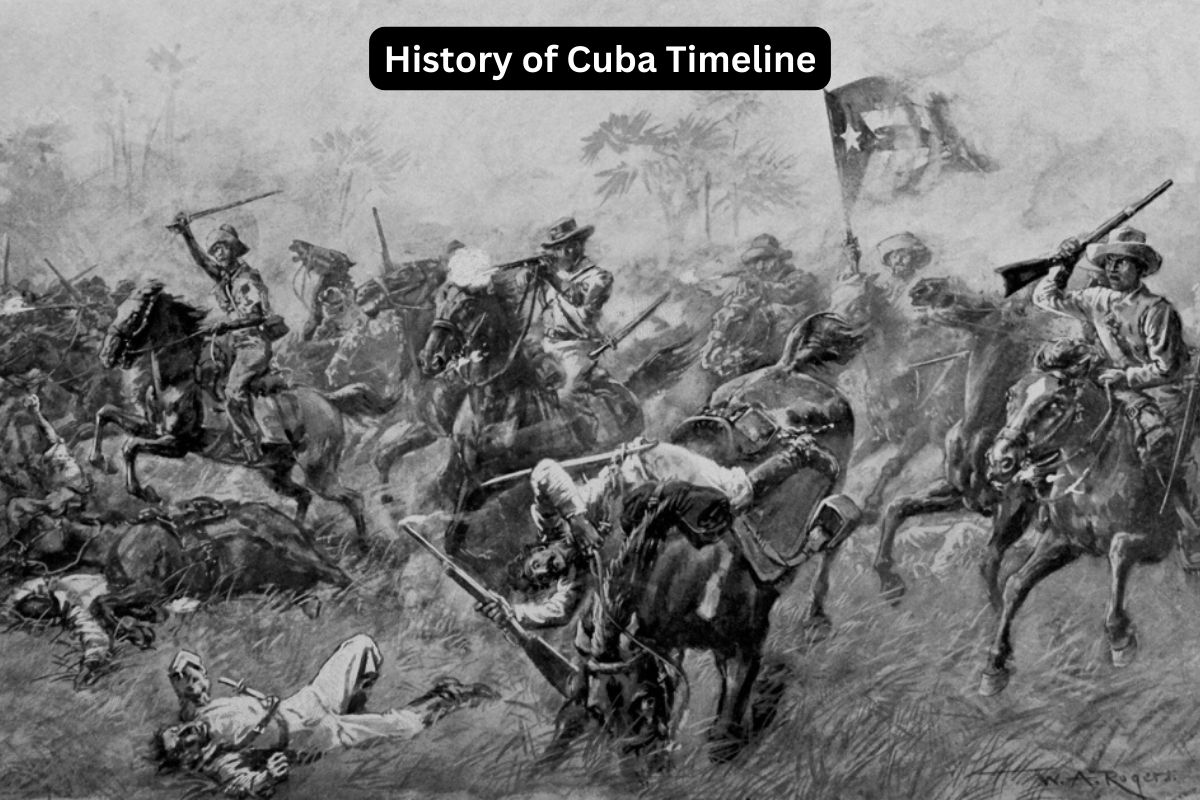Cuba’s history is a compelling saga of resilience and transformation, from its indigenous roots to its modern-day evolution.
This article offers a concise exploration of key events and figures that have shaped Cuba’s trajectory.
From Spanish colonization to Fidel Castro’s revolution and the challenges of the post-Castro era, each chapter reflects the island’s enduring spirit and the forces that have molded its identity.
Join us as we delve into the rich tapestry of Cuban history, uncovering the threads that bind its past to its present.
| Year | Event |
|---|---|
| Pre-1492 | The island of Cuba is inhabited by indigenous peoples, including the Taíno and Ciboney. |
| 1492 | Christopher Columbus lands on the island during his first voyage to the Americas, claiming it for Spain. |
| 1511 | Spanish colonization begins with the arrival of Diego Velázquez de Cuéllar, who establishes Baracoa as the first Spanish settlement. |
| 1515-1898 | Cuba remains a Spanish colony for over three centuries, with a primarily agrarian economy based on sugar production and African slave labor. |
| 1868-1878 | The Ten Years’ War (Guerra de los Diez Años) breaks out, marking the first of three wars for Cuban independence from Spanish rule. |
| 1895-1898 | The Cuban War of Independence (also known as the Spanish-American War) erupts, with Cuban insurgents fighting against Spanish forces. The United States intervenes, leading to the defeat of Spain and the signing of the Treaty of Paris in 1898. |
| 1898 | Following the end of the Spanish-American War, Cuba is placed under temporary U.S. military rule. |
| 1902 | Cuba formally gains independence from the United States and becomes a republic, with Tomás Estrada Palma as its first president. |
| 1906-1909 | The United States intervenes militarily in Cuba during a period of instability, known as the Second Occupation of Cuba. |
| 1925-1933 | Gerardo Machado serves as president, overseeing a period of economic growth but also increasing authoritarianism and repression. |
| 1952 | Fulgencio Batista seizes power in a military coup, establishing a dictatorship. |
| 1953 | Fidel Castro leads an unsuccessful attack on the Moncada Barracks, marking the beginning of the Cuban Revolution. |
| 1959 | Fidel Castro’s forces overthrow Batista’s government, and Castro becomes Prime Minister of Cuba. |
| 1961 | The Bay of Pigs Invasion, a failed U.S.-backed attempt to overthrow Castro’s government, takes place. |
| 1962 | The Cuban Missile Crisis occurs, bringing the world to the brink of nuclear war as the United States discovers Soviet nuclear missiles in Cuba. |
| 1976 | A new constitution is adopted, establishing Cuba as a socialist state with the Communist Party as the sole legal political party. |
| 1991 | The collapse of the Soviet Union leads to the loss of economic support for Cuba, resulting in a period of economic hardship known as the “Special Period.” |
| 2006 | Fidel Castro transfers power to his brother, Raúl Castro, due to health issues. |
| 2014 | The United States and Cuba announce plans to normalize diplomatic relations, leading to the reestablishment of embassies in Havana and Washington, D.C. |
| 2016 | Fidel Castro dies at the age of 90. |
| 2018 | Raúl Castro steps down as president, and Miguel Díaz-Canel becomes the new president of Cuba, marking the first time in nearly six decades that a Castro is not in power. |
Timeline of the History of Cuba
Pre-1492: The island of Cuba is inhabited by indigenous peoples, including the Taíno and Ciboney
Before the arrival of Christopher Columbus, the island of Cuba was inhabited by indigenous peoples, primarily the Taíno and Ciboney.
These indigenous groups had developed complex societies with advanced agricultural practices, including cultivating crops like maize, cassava, and sweet potatoes. They also engaged in fishing, hunting, and gathering, and had established social structures and religious beliefs.
1492: Christopher Columbus lands on the island during his first voyage to the Americas, claiming it for Spain
Christopher Columbus landed on the island of Cuba during his first voyage to the Americas on October 28, 1492.
Also Read: Historical Facts About Cuba
He initially landed near what is now the province of Holguín, and later sailed along the northern coast of the island. Columbus believed he had reached the eastern coast of Asia and called the island “Juana,” though it was later renamed “Cuba.”
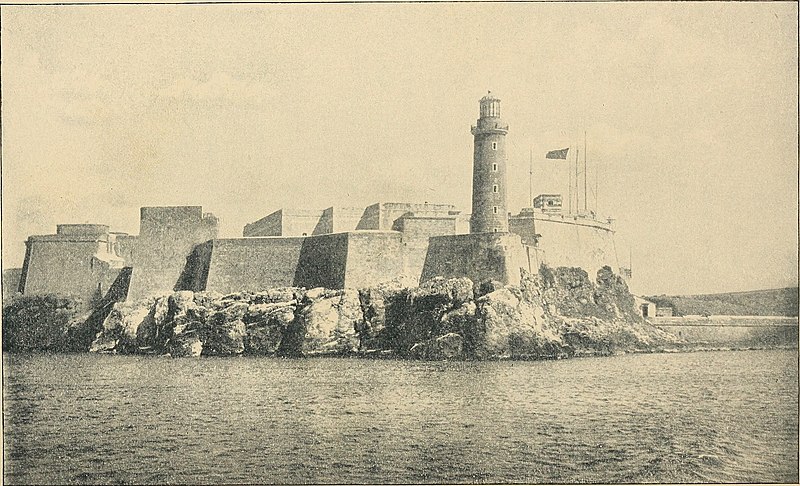
1511: Spanish colonization begins with the arrival of Diego Velázquez de Cuéllar, who establishes Baracoa as the first Spanish settlement
Spanish colonization of Cuba began with the arrival of Diego Velázquez de Cuéllar, who led an expedition to the island under orders from the Spanish crown.
Velázquez established the town of Baracoa as the first Spanish settlement in 1511. Over the following decades, Spanish settlers founded more towns and established control over the indigenous populations, exploiting them for labor and resources.
1515-1898: Cuba remains a Spanish colony for over three centuries
Over the next three centuries, Cuba remained a Spanish colony, known primarily for its lucrative sugar plantations. The Spanish colonial economy relied heavily on African slave labor to cultivate sugarcane and other crops.
Also Read: Cuban Revolution Facts
This period saw the growth of large estates, or “plantations,” known as “ingenios,” where sugar was processed. Havana, the capital city, became a major hub for trade and commerce in the Caribbean.
1868-1878: The Ten Years’ War (Guerra de los Diez Años) breaks out, marking the first of three wars for Cuban independence from Spanish rule
The Ten Years’ War (Guerra de los Diez Años) was the first of three major conflicts for Cuban independence from Spanish rule. It began on October 10, 1868, when Cuban nationalists, led by figures like Carlos Manuel de Céspedes, rose up against Spanish colonial authority.
The war was marked by fierce battles and atrocities on both sides but ultimately ended in defeat for the Cuban rebels. Although the Ten Years’ War did not achieve independence, it laid the groundwork for future movements towards liberation.
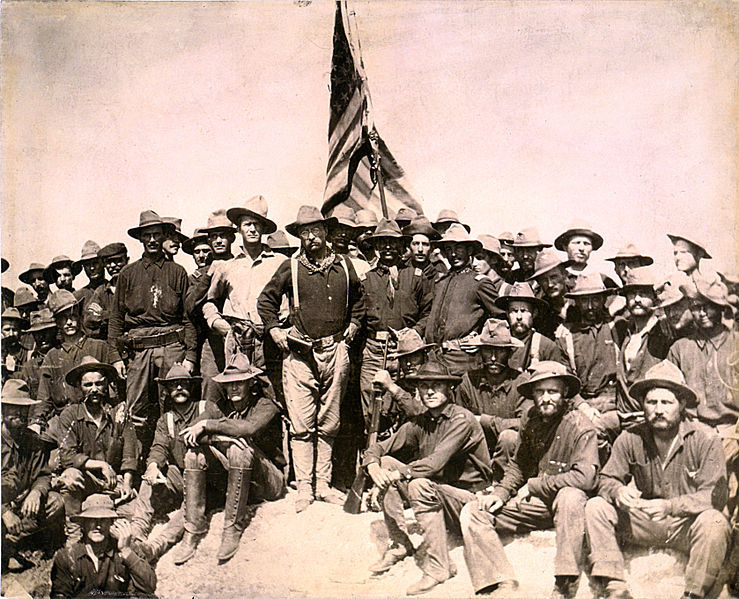
1895-1898: The Cuban War of Independence (also known as the Spanish-American War) erupts
The Cuban War of Independence, also known as the Spanish-American War, was a major conflict that erupted as part of Cuba’s struggle for independence from Spanish colonial rule.
It began in 1895 when Cuban insurgents, including leaders like José Martí and Máximo Gómez, launched a series of uprisings against Spanish authority.
The conflict gained international attention and sympathy, particularly in the United States, where public sentiment turned against Spain due to reports of Spanish atrocities in Cuba and the destruction of the USS Maine, an American battleship, in Havana harbor.
The United States intervened in the war in 1898, leading to the defeat of Spanish forces and the signing of the Treaty of Paris later that year, which granted Cuba independence from Spain.
1898: Following the end of the Spanish-American War, Cuba is placed under temporary U.S. military rule
Following the end of the Spanish-American War, Cuba was placed under temporary U.S. military rule. This period, known as the “Occupation of Cuba,” lasted from 1898 to 1902 and saw significant changes in Cuban governance and society.
The United States established military administration and initiated reforms aimed at modernizing Cuba’s infrastructure, economy, and public health system.
1902: Cuba formally gains independence from the United States and becomes a republic
On May 20, 1902, Cuba formally gained independence from the United States and became a republic. Tomás Estrada Palma was elected as the first president of the newly independent nation.
Despite achieving political sovereignty, Cuba’s economy remained heavily influenced by American interests, particularly in the sugar industry, and the Platt Amendment, a provision of the Cuban-American Treaty, granted the United States significant control over Cuban affairs.
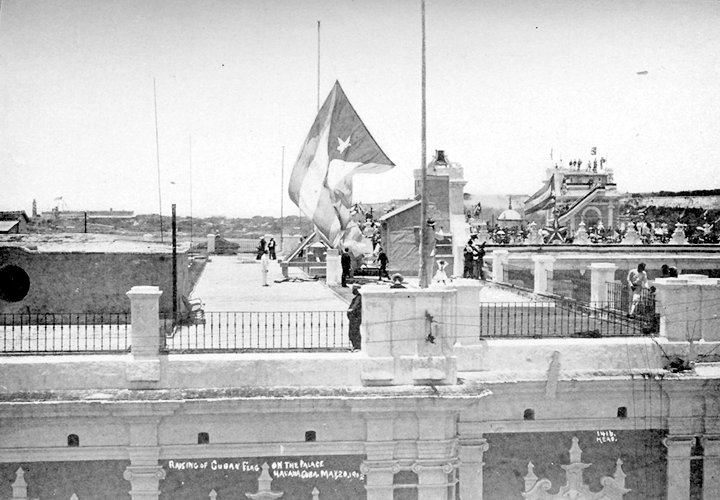
1906-1909: The United States intervenes militarily in Cuba during a period of instability, known as the Second Occupation of Cuba
The Second Occupation of Cuba occurred from 1906 to 1909 when the United States intervened militarily in Cuba during a period of political unrest and rebellion against the government of President Tomás Estrada Palma.
The intervention was prompted by concerns over instability and violence in Cuba, as well as threats to American economic interests.
During the occupation, the United States oversaw the establishment of a provisional government and supervised the conduct of elections. The occupation ended with the establishment of the Republic of Cuba under the presidency of José Miguel Gómez.
1925-1933: Gerardo Machado serves as president, overseeing a period of economic growth but also increasing authoritarianism and repression
Gerardo Machado served as president of Cuba from 1925 to 1933. His presidency was characterized by economic growth and modernization initiatives, including the construction of infrastructure projects such as roads and buildings.
However, Machado’s rule became increasingly authoritarian, marked by political repression, censorship, and corruption.
Growing discontent with his regime eventually led to widespread protests and the outbreak of a popular uprising known as the “Revolt of the Sergeants” in 1933, which forced Machado into exile and paved the way for a period of political instability in Cuba.
1952: Fulgencio Batista seizes power in a military coup, establishing a dictatorship
In 1952, Fulgencio Batista seized power in Cuba through a military coup, overthrowing the elected government of President Carlos Prío Socarrás.
Batista suspended the constitution and established himself as dictator, initiating a period of authoritarian rule characterized by corruption, repression, and close ties to American business interests.
Batista’s regime was marked by economic inequality, political persecution, and the suppression of dissent.
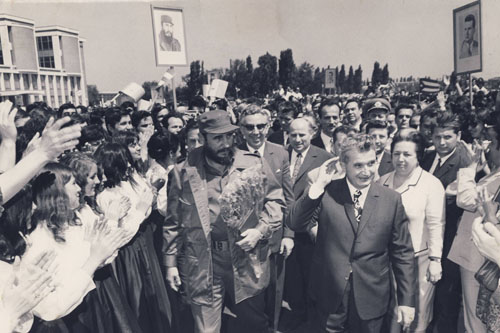
1953: Fidel Castro leads an unsuccessful attack on the Moncada Barracks, marking the beginning of the Cuban Revolution
On July 26, 1953, Fidel Castro led an unsuccessful attack on the Moncada Barracks in Santiago de Cuba, marking the beginning of the Cuban Revolution.
The assault, known as the “Moncada Barracks attack,” aimed to overthrow Batista’s government but was swiftly defeated by government forces.
Castro and many of his followers were captured and imprisoned. Despite the failure of the attack, it galvanized opposition to Batista’s regime and laid the groundwork for future revolutionary efforts.
1959: Fidel Castro’s forces overthrow Batista’s government, and Castro becomes Prime Minister of Cuba
The Cuban Revolution culminated in January 1959 when Fidel Castro’s forces successfully overthrew Fulgencio Batista’s government. After years of guerrilla warfare and popular resistance, Batista fled Cuba on January 1, 1959, and Castro’s revolutionary movement seized control of Havana.
Fidel Castro emerged as the leader of the new government, initially serving as Prime Minister before assuming the presidency.
The revolution brought significant social, political, and economic changes to Cuba, including land reform, nationalization of industries, and the implementation of socialist policies.
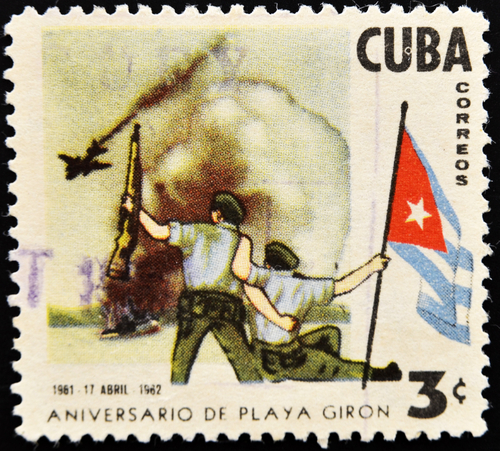
1961: The Bay of Pigs Invasion, a failed U.S.-backed attempt to overthrow Castro’s government, takes place
The Bay of Pigs Invasion occurred in April 1961 when a CIA-backed paramilitary force composed of Cuban exiles attempted to overthrow Fidel Castro’s government. The invasion, launched from the Bay of Pigs on the southern coast of Cuba, was intended to spark a popular uprising against Castro’s regime.
However, the operation was poorly executed and quickly repelled by Cuban armed forces. The Bay of Pigs Invasion was a humiliating defeat for the United States and solidified Castro’s hold on power, leading to increased tensions between Cuba and the United States.
1962: The Cuban Missile Crisis occurs, bringing the world to the brink of nuclear war as the United States discovers Soviet nuclear missiles in Cuba
The Cuban Missile Crisis was a pivotal moment in Cold War history that brought the world to the brink of nuclear war. In October 1962, the United States discovered that the Soviet Union had deployed nuclear missiles in Cuba, capable of striking targets in the continental United States.
President John F. Kennedy demanded the removal of the missiles and imposed a naval blockade around Cuba to prevent further Soviet shipments.
After tense negotiations, the crisis was defused when Soviet Premier Nikita Khrushchev agreed to withdraw the missiles in exchange for a pledge from the United States not to invade Cuba and to remove its own missiles from Turkey.
The Cuban Missile Crisis highlighted the dangers of nuclear brinkmanship and led to improved communication between the United States and the Soviet Union to prevent similar crises in the future.
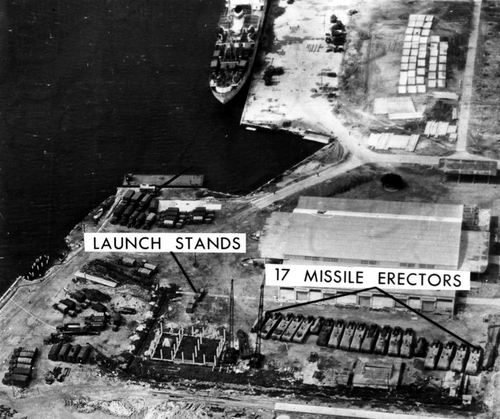
1976: A new constitution is adopted, establishing Cuba as a socialist state with the Communist Party as the sole legal political party
In 1976, Cuba adopted a new constitution that established the country as a socialist state and formally recognized the Communist Party as the leading political force.
The constitution enshrined principles of Marxism-Leninism, centralized planning of the economy, and the primacy of the Communist Party in guiding the country’s political and social development. It also outlined the structure of the government, including the roles of the National Assembly and the Council of State.
1991: The collapse of the Soviet Union leads to the loss of economic support for Cuba, resulting in a period of economic hardship known as the “Special Period”
The collapse of the Soviet Union in 1991 had profound consequences for Cuba, which had relied heavily on Soviet economic aid and subsidies for decades. With the loss of its main benefactor, Cuba entered a period of economic hardship known as the “Special Period.”
The Special Period was characterized by severe shortages of food, fuel, and other basic necessities, as well as economic restructuring and reforms aimed at mitigating the crisis.
Cuba sought to diversify its economy, attract foreign investment, and implement measures to increase self-sufficiency and resilience.
2006: Fidel Castro transfers power to his brother, Raúl Castro, due to health issues
In 2006, Fidel Castro, who had led Cuba since the revolution in 1959, transferred power to his brother, Raúl Castro, due to health issues. Fidel Castro had been in declining health for several years and underwent surgery for intestinal bleeding.
Raúl Castro assumed the role of acting president and later officially became president in 2008 following Fidel’s resignation. Raúl Castro initiated a series of economic reforms and policy changes aimed at modernizing Cuba’s economy and government institutions while maintaining the socialist system established by the revolution.
2014: The United States and Cuba announce plans to normalize diplomatic relations
In December 2014, the United States and Cuba announced plans to normalize diplomatic relations, marking a significant shift in bilateral relations after decades of hostility and estrangement.
The announcement followed secret negotiations facilitated by Pope Francis and Canada and included the release of political prisoners, the easing of travel restrictions, and the reopening of embassies in Havana and Washington, D.C.
The thaw in relations signaled a new era of engagement between the two countries and raised hopes for increased cooperation and economic integration.
2016: Fidel Castro dies at the age of 90
Fidel Castro passed away on November 25, 2016, at the age of 90. His death marked the end of an era in Cuban history and elicited reactions from around the world.
Castro’s legacy as a revolutionary leader and statesman remains deeply divisive, with supporters praising his role in overthrowing Batista’s dictatorship and advancing social justice, while critics condemn his authoritarian rule, human rights abuses, and suppression of dissent.
2018: Raúl Castro steps down as president, and Miguel Díaz-Canel becomes the new president of Cuba
In April 2018, Raúl Castro stepped down as president of Cuba, marking the end of nearly six decades of Castro family rule. Miguel Díaz-Canel, a longtime Communist Party official, was elected as the new president by the National Assembly.
Díaz-Canel’s presidency signaled a generational transition in Cuban leadership and raised questions about the future direction of the country’s political and economic policies. Despite the leadership change, Cuba’s socialist system and close ties with countries like Venezuela and Russia remained largely intact.
